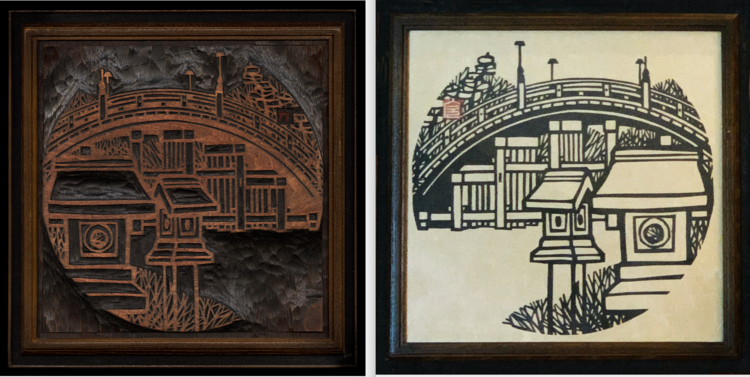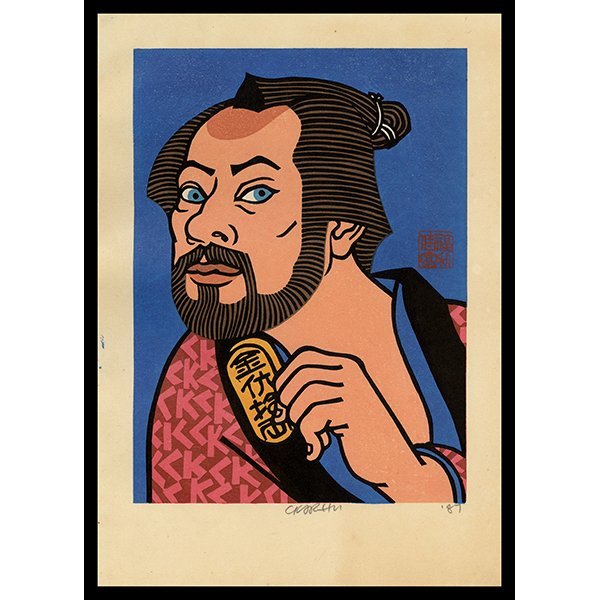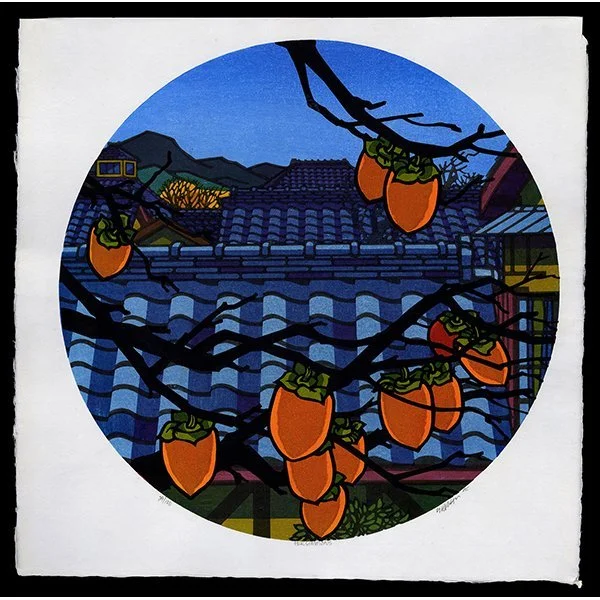<b>SUMIYOSHI</b> / Clifton Karhu1977<b>SOLD</b></em>
ARTIST: Clifton Karhu (1927-2007)
TITLE: Sumiyoshi
EDITION: A.P.
MEDIUM: Woodblock
DATE: 1977
DIMENSIONS: 12 3/8 x 13
CONDITION: Excellent—no problems to note
NOTE: With original woodblock and kyôgô-zuri, keyblock print
SOLD
ARTIST: Clifton Karhu (1927-2007)
TITLE: Sumiyoshi
EDITION: A.P.
MEDIUM: Woodblock
DATE: 1977
DIMENSIONS: 12 3/8 x 13
CONDITION: Excellent—no problems to note
NOTE: With original woodblock and kyôgô-zuri, keyblock print
SOLD
ARTIST: Clifton Karhu (1927-2007)
TITLE: Sumiyoshi
EDITION: A.P.
MEDIUM: Woodblock
DATE: 1977
DIMENSIONS: 12 3/8 x 13
CONDITION: Excellent—no problems to note
NOTE: With original woodblock and kyôgô-zuri, keyblock print
SOLD
Details
In his youth, Clifton Karhu studied with Stanton Macdonald-Wright, the American cofounder of Synchromism, an early abstract, color-based mode of painting, which was the first American avant-garde art movement to receive international attention. Because of his studies with Macdonald-Wright, Karhu developed a fascination with color. Like Macdonald-Wright, Karhu believed color was an active character in painting. Though Macdonald-Wright advocated for abstraction, Karhu used color in unorthodox and innovative ways to accentuate the representational subject and put it into a different context to free up old associations and present subjects in fresh and revolutionary ways.
This design showcases the half-moon bridge found at the Sumiyoshi Taisha Shrine in Osaka. The shrine happens to be one of the oldest in the region and a top attraction for pilgrims and tourists. Though the subject in Karhu’s design is the bridge, color is equally important. The bridge is rendered in its familiar vibrant red, but the accompanying pigmentation throughout the composition is a mélange of contrasting and complementary colors that animate the design in Karhu’s signature palate. The burnt orange of the sky gives way to a hint of yellow which highlights the red of the bridge. The purple in the foliage cools the design a bit while the reflection of yellows and greens cast on the water evoke the passage of time as the day’s colors give way to the deepening hues of evening. Karhu rarely populates his designs. Instead, the artist uses color as an active agent to convey emotion and purpose.
The composition is presented in a circular format, perhaps paying homage to the fan prints of Hiroshige and Hokusai from the Edo period. Karhu adapts this format effectively, using it as a device to accentuate the half-moon-shaped bridge. Geometry and color play well in this jungle gym of Karhu’s design, giving the viewer a fresh look at an attraction they may have previously considered familiar.
Connoisseur's Note
This print is an A.P., and is printed on a larger sheet of paper and is part of a three-piece presentation set. The print comes with the original wood keyblock used to print the black outline of the design. The artist canceled the keyblock in that he has carved his signature (the character “Ka”) directly onto the block after the edition was complete. This set also comes with a black and white printing of the keyblock. Karhu was very protective of his woodblocks and routinely destroyed them after the completion of his prints. As such, presentation sets like this one are exceedingly rare and highly sought after by collectors and institutions.






